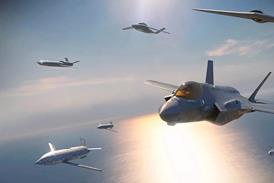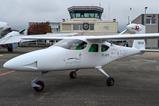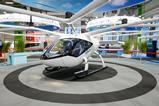As the US airlines reported their 2021 fourth-quarter results recently, a common theme emerged among executives trying to navigate the post-pandemic environment: a pilot shortage.
Aside from an Omicron-fuelled dip, the commercial airline business is booming again – at least in the USA. Passengers are back, normalcy has mostly returned, and many carriers hope to be profitable for the first time since 2019.
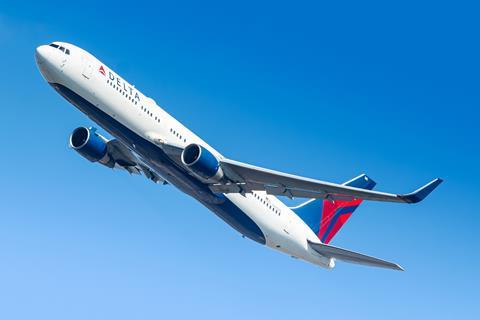
But airlines are finding that it is becoming increasingly difficult to fully take advantage of the rebound.
When Covid-19 brought the industry to the brink of collapse and rattled airline executives, carriers were quick to shed employees, retire aircraft, suspend routes and cut costs wherever they could. They offered generous early retirement packages and long-term voluntary leaves, hoping to stem the cash haemorrhage until passenger demand returned.
In March 2020, no-one could predict what the new virus had in store, or for how long. Two years later, while many airlines in Europe and the Asia-Pacific region are still feeling the pain of the worst crisis to hit the industry in its 100-year-plus history, US airlines are staring down another predicament that could again harm their growth prospects.
The quick reaction and short-term fixes that seemed critical at the time have resulted in a major, long-term headache.
The problem has many facets. On one hand, young people face a high barrier to career entry. At the opposite end of the age scale, mandatory retirements threaten to deplete the talent and experience pool. For pilots of all ages, maintaining a good quality of life is an ongoing concern. Airlines, meanwhile, continue to expand their fleets.
Geoff Murray, an aviation consultant and partner at Oliver Wyman, predicted last year that after the Covid-19 crisis ebbs, a “pilot re-shortage” was imminent. At the time, he said by 2029 there could be a gap of 21,000 airline pilots in the USA, with regional and low-cost carriers feeling the pipeline pinch most.
“Now, it’s gotten worse,” he says.
And the coronavirus crisis was just a firebreak, not the origin of the problem.
LONG-TERM PROBLEM
“The pilot shortage was not caused by the pandemic,” says Faye Malarkey Black, chief executive of the Regional Airline Association. “It’s been preoccupying regional airlines for the last decade at least.”
US pilot schools are full and airlines’ appetites for new hires now seem insatiable.
A year ago, one major airline predicted it might recruit 50 pilots per month, Murray says. It is now hiring 50-70 every week.
In January alone, the largest 12 US passenger and cargo carriers filled 1,136 pilot jobs, says consultancy Future & Active Pilot Advisors (FAPA). American Airlines, Delta Air Lines and United Airlines alone accounted for 63% of that number.
At that rate, those same 12 airlines could hire more than 13,000 new pilots by the end of 2022. By comparison, in 2021, they filled 5,426 pilot jobs – the highest number ever, FAPA says.
“It’s remarkable, and a completely different dynamic than we’ve seen in the past,” Murray adds.
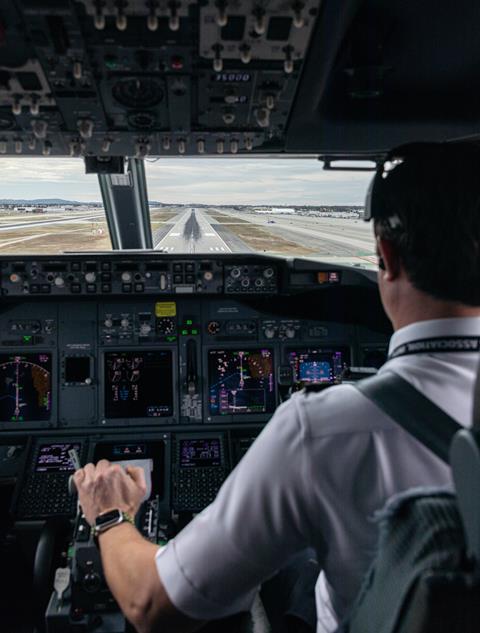
As the career entry point for most professional pilots, regional carriers will shoulder a heavier burden than their major airline clients, he says. Their annual turnover rate could top 40% – almost three times the normal figure.
That is a lot of seats to fill.
“Typically there may be 10-18% of the pilot workforce that’s in training on any given day. But with 40% turnover, first officers are becoming captains the same year. So they have to be trained as a first officer for six to eight weeks and in that same year, they’re being trained another six to eight weeks for captain. So you need to account for all of this training because of all of these seat movements. And that is materially impacting the regionals.”
In these heady days following two years of global pain, where the most overused phrase in the industry is “satisfying pent-up demand”, airlines are desperately searching for the keys to unlock a torrent of aviation talent to fly their aircraft.
“There’s never been a better time to be a pilot,” Malarkey Black says.
While the environment favours jobseekers and travellers are returning faster than expected, the industry is having a hard time reaping the benefits.
SkyWest Airlines, the USA’s largest regional operator, with more than 500 aircraft flying for four major carriers, said in February it expects to fly between 10% and 15% fewer block hours in 2022 because of what it calls the “pilot imbalance”. That trend will likely stretch into 2023. SkyWest executives say they had planned for attrition, just not this much.
CHOKING SUPPLY
Jonathan Ornstein, chief executive at Mesa Airlines, a regional carrier for United and American, goes one step further. He has blasted regulators for keeping “ill-advised” rules in place that he says are effectively choking off the pilot supply.
Most evident of these is the requirement that young pilots log 1,500h of flightdeck experience before they can even apply for a job with the airlines.
“This is not a safety issue. There is not a shred of evidence that says that a 1,500-hour pilot is safer than a 300-hour pilot with intense training,” he says. “It’s important that politicians start to act and take this up because they know they’re putting the industry in jeopardy. It’s not sustainable.”

And it is the smaller communities across the USA that stand to lose the most as airlines cut routes to less-than-profitable destinations.
“No matter what we do, and no matter how fast we do it, more communities are going to lose service before this stabilises, and that’s the very bad news,” says Malarkey Black. “There’s no other way to spin it. It’s already happening.”
The pull-back has been going on since at least 2009, she says. In that year, 582 airports across the USA had scheduled commercial air service. By 2018 the figure had dropped to 567, and last year it shrunk to 549.
“The vast majority of the air service growth [during that time] was limited to about 30 large hub airports, and everybody else was gaining seats but they were losing departures and destination options,” she adds.
ELIMINATED FLIGHTS
Late last year, United’s chief executive Scott Kirby said the carrier had grounded more than 100 aircraft and eliminated flights to some secondary cities because it does not have enough aviators.
In the meantime, United has bought a flight school and launched its own training programme, which it hopes will secure at least a portion of its pipeline. Delta, Southwest Airlines and Spirit Airlines, among others, also have pathway programmes designed to pave the way to a pilot career.
Other carriers are trying different approaches. Low-cost start-up Breeze Airways, charter carrier Atlas Air and SkyWest have begun recruiting pilots from abroad under a visa programme that would allow qualified Australian citizens to work in the USA, FAPA says.
Most airlines have scrapped their four-year university degree requirement in an effort to attract more applicants. Others offer substantial stipends to help qualified helicopter pilots earn fixed-wing certificates and ratings.
“It is too late to stop air service loss, but it’s not too late to stop digging this hole even deeper for smaller communities,” Malarkey Black says. “If we were to act now we could very quickly stabilise the situation.”
But opinions differ on exactly how.
The biggest question for many potential pilot candidates in the USA is how to pay for training. The price tag for certification – from zero to an air transport pilot (ATP) qualification – can be $100,000 or more, putting a career on the flightdeck out of reach for many.
“It’s difficult to categorise a pilot certification,” says Steve Booth, a flight instructor at Las Vegas-based All In Aviation. Booth is one of those young pilots, currently clocking the time he is going to need for the path that will someday lead him into the right-hand seat of an airliner cockpit.
“The crummy thing is that flight training is in this weird grey area where it’s not usually a university education, and it’s not a trade school. Unless you’ve got six figures in the bank to burn, everyone’s taking out personal loans to do it,” he says. Those loans can feature interest rates of 8-10%.
“Start doing the math on 10% on a six-figure loan,” he notes.
After securing private, commercial and flight instructor certifications, pilots who want to head towards the airlines begin running like crazy to the magical 1,500h goalpost. There are no rules as to what kind of flying or in what kind of aircraft those hours have to be completed.
The usefulness of this so-called “1,500h rule”, implemented in 2010 following the deadly crash of a Colgan Air De Havilland Canada Dash 8-400, attributed in part to the pilots’ lack of aeronautical experience, is again being hotly debated. That bar was previously 250h.
There are exceptions to the 1,500h-rule, for example for military pilots and those pursuing a university degree in aviation. Those pilots can advance to an airline job with 750-1,250h total time. But the vast majority of civilian pilot candidates train at independent flight schools and need two years or more to collect their hours, and try to live on salaries that are often just above minimum wage.
FINANCIAL INCENTIVE
“I’m paid well, but most flight instructors are not,” Booth says. “Making 25 bucks an hour is not going to pay the bills, especially if you’ve got people depending on you.”
Booth is building time by teaching future pilots in single-engined piston aircraft – experience that some say is of limited use in an Airbus or Boeing jet. For those who have no desire, interest or aptitude to teach, there are few other ways to build the time.
“[Being a pilot instructor] is hard, and it’s not for everyone,” he says.
Ironically, other parts of the world have no such minimum time requirement. Potential pilots for European carriers such as KLM and Lufthansa are selected to go through a cadet programme, and often reach the airline cockpit with far fewer hours of actual flight time in their logbooks. However, they have a more comprehensive academic or classroom education.
“No other country in the world has adopted [the 1,500-hour] rule, not a single one,” says Mesa’s Ornstein. “It seems crazy that a 300-hour first officer can land a Lufthansa [Airbus] A350 into JFK flying over Queens and a US pilot can’t do the same thing.”
While that may be an exaggeration to prove a point, the pilot education system in Europe does allow low-time pilots to fly single-aisle passenger aircraft across jam-packed airspace and into busy airports across the continent.
“Lufthansa, British Airways, KLM – when you look at their training academies, a new-hire narrowbody first officer is lucky to have 300 hours,” says Murray. “That’s not unusual.”
Despite the bottleneck, unions and high-time aviators are pushing back hard on relaxing the rule, claiming it has prevented accidents and saved lives.
Air Line Pilots Association, International (ALPA) calls the airlines’ claims they cannot get enough aviators “fictitious”. The companies, ALPA says, are attempting to “weaken training and safety standards and distract from their profit-first business decisions to cut service and hire inexperienced aviators for less pay, instead of focusing on changes to fundamental issues associated with these profit-driven business models”.
Still, most industry experts agree that something has to give.
Malarkey Black says going back to a lower hour requirement might not be the best way to solve the training dilemma, but using new technologies and different training techniques could.
“It is going to be critical to show that training actually enhances safety. Anything that is promoted has to be safer than the alternative, which is just accumulating hours,” she says. “For example, you can create a situation in a simulator that completely replicates the actual flying characteristics of the physical aircraft better and a lot more safely than even 10 years ago.”
ALTERNATIVE MODELS
“Every training entity, and every regional [airline] in North America is looking for avenues to satisfy the spirit of the 1,500-hour rule – an experienced, competent pilot, with a curriculum and level of experience – that would involve less than 1,500 hours in the cockpit,” Murray adds. “They are all thinking through alternatives to that model.”
And some carriers have already decided to take the matter into their own hands. United’s recently-launched Aviate programme, and Lift Academy, which trains pilots for regional carrier Republic Airways, are in a position to develop training alternatives that could model those in other parts of the world.
United’s pilot-training business in mid-February ordered 25 Cirrus TRAC SR20s, and took options on a further 50. Aviate, which already operates 25 examples of of the type, expects to receive the first of the new batch during May. It also recently purchased seven new flight simulators, for delivery from April.

Aviate also offers students partial scholarships to attract a more-diverse pilot workforce, and is committed to filling at least 50% of its slots with women or people of colour. That is a high target in an industry that continues to be dominated by white men. According to the US Federal Aviation Administration (FAA), in 2021 only 4.7% of certified air transport pilots were female. An even smaller percentage is non-white.
“We are going to see more sponsorship programmes here in the US geared to diversity,” Murray says.
New financing models such as income-share agreements – where a candidate receives financial aid during training and pays the fees back gradually when they are qualified and making a decent salary – are also evolving.
“The economics have changed,” he adds. “Airlines are asking themselves: ‘How do we get in on this? Pilots are in demand, training is expensive, but we know if we make the right bet on the right person, they’re going to get through it, and they’re going to be making a lot of money in 10 years’.”
Another long-term obstacle to pilot supply looms on the opposite end of the age and experience spectrum. In the USA, pilots must retire from the commercial flightdeck when they turn 65.
At the beginning of the pandemic in 2020, many older pilots took early retirement packages, and thousands more are set to exit the industry in the near term.
RETIREMENT AGE
FAA airman certification statistics show that in 2021 about 71,000 pilots who hold an ATP qualification were between the ages of 50 and 64, and therefore due to retire in the next 15 years. That is about 49% of the current ATP-qualified population.
Just over one-third of those, or 22,500, are 60-64 years old, and will be leaving the workforce by 2027.
FAPA says that one major US carrier will see 43% of its pilot workforce retire by 2030 and 61% by 2036.
“So even as airlines are doing a lot to try to increase the pipeline supply, they’re going to be fighting against losing a lot of pilots who are forced to retire in the next few years also,” Murray says.
And as with career entry, here too, the mindset around extending those careers is shifting.
“I fully expect there will be some movement around the retirement requirement,” he adds.
The industry’s challenge boils down to a single problem, says Booth. “There’s just too many people leaving, and not enough people coming.”
For those pilots with the experience and the flight hours, life right now is very, very good.
Airlines have begun offering signing bonuses of up to $50,000, profit-sharing plans, tuition reimbursement and retention bonuses. In the recent winter holiday season airlines offered extra pay to crew to cover for their colleagues during the Omicron wave that disrupted one of the busiest travel periods of the year.
Newcomer Avelo Airlines recently announced a new pay scale and bonuses that will allow a first-year Boeing 737 captain to earn at least $210,000 and a first officer to make $117,400 – salaries that just a few years ago were unheard of in the low-cost sector.
Last December, Sun Country Airlines agreed to boost pilot pay by 35-45%, bringing the salary structure into line with other carriers operating the same type of aircraft.
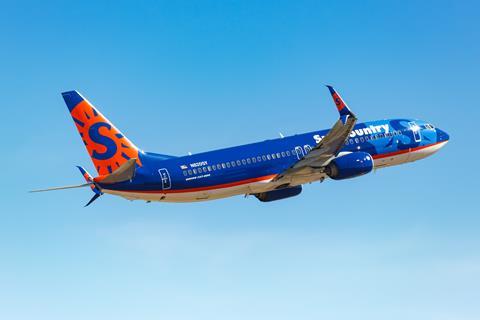
But in this hot hiring market, analysts say airlines will need to find more creative ways to keep their pilots, beyond one-off bonus payments and higher salaries. At the top of that list is the preferential bidding system (PBS) that promises to pay dividends for both airlines and their employees.
PBS is a form of crew scheduling that takes individual preferences into account, rather than assigning trip schedules with an algorithm. Sun Country chief executive Jude Bricker has said PBS is a game-changer.
“Our pilots can, while still honouring seniority, select a schedule that works for them, rather than us building one for them every month, which is an outdated system,” he says. “We’ll have fewer dropped trips and more efficiency of the pilot workforce.”
“There are two things that pilots look at: pay and quality of life,” says Murray. “In the immediate term, airlines have addressed the issue with pay. Longer term, they’re going to address it with quality of life. And PBS is one of those enablers.”
Booth, meanwhile, continues chipping away at his 1,500h target and his loans, one flight student at a time. And he remains clear-eyed about his prospects.
“Something else could happen tomorrow, right? The industry could fall apart again,” he says. “But that’s a risk I’m willing to take. I don’t really want to do anything else, so I’m going to figure it out one way or another.”





